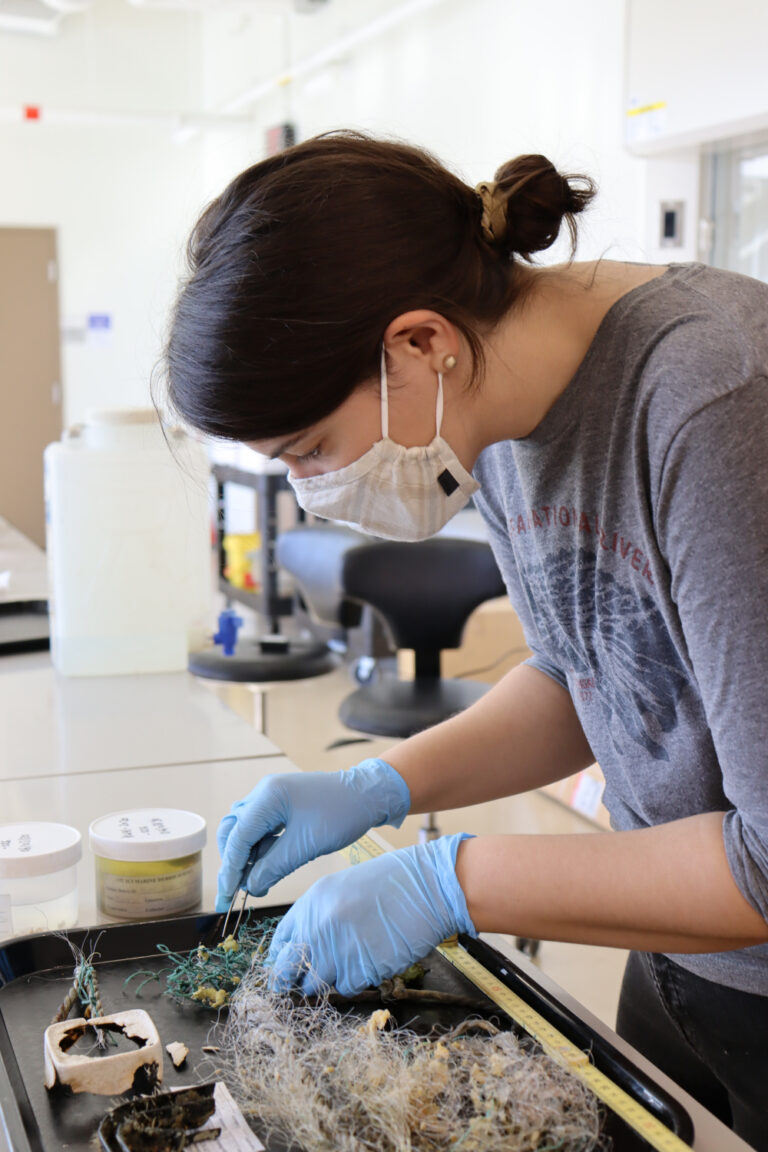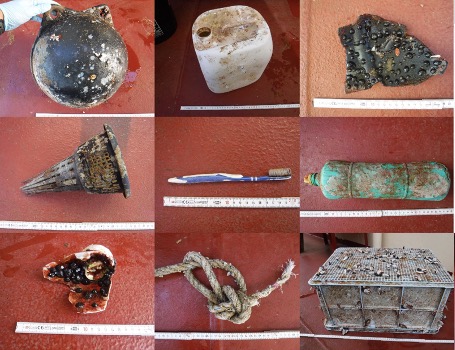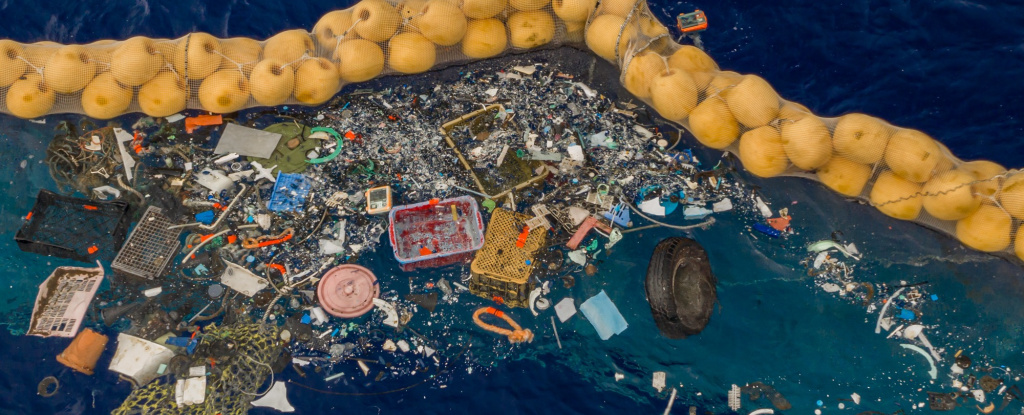Coastal critters thought to be strangers to the open ocean have been found amongst the seething mass of plastic waste that is the Great Pacific Garbage Patch.
"The issues of plastic go beyond just ingestion and entanglement," Linsey Haram, a marine ecologist formerly at the Smithsonian Environmental Research Center, explained when in the process of conducting her research. "It's creating opportunities for coastal species' biogeography to greatly expand beyond what we previously thought was possible."
Haram first drew attention to the emergence of coastal species on buoyant plastic rafts adrift in the open ocean with a paper she co-authored that warned this could be a new route by which coastal critters invade new, unsuspecting habitats.
Rarely documented until now, one historical example was of coastal-dwelling invertebrates hitching a ride across the North Pacific Ocean on plastic debris swept out to sea in the 2011 Japanese earthquake and tsunami. Hundreds of invertebrate species clung on for six years to debris that washed ashore in North America and Hawaii in 2017.
But the extent to which coastal species, once assumed incapable of surviving long periods of time on the high seas, hopped aboard rafts of plastic waste remained largely unknown. What kinds of species are finding refuge in the refuse? What new communities are forming on the high seas far beyond their usual limits?
To answer those questions, Haram sampled debris from the Great Pacific Garbage Patch, the swirling mass of plastic buoys, buckets, bottles, rope, and fishing nets that continues to accumulate in the North Pacific Ocean, thousands of kilometers from any coastline.
Most of that plastic waste can be traced back to just five industrialized fishing nations, recent studies show, but the growing collection of unlikely passengers nestled within the Garbage Patch had for the most part been overlooked.
Now, Haram's latest study suggests that communities of coastal species rafting on plastic waste were more common and diverse than scientists had previously suspected.
Coastal invertebrate species such as crustaceans, sea anemones, and bryozoans, were found on some 70 percent of the 105 plastic items Haram and her colleagues surveyed. The number and taxonomic richness of coastal species on those items also far outweighed the diversity of pelagic species that usually exist in the open ocean.
"It appears that coastal species persist now in the open ocean as a substantial component of a neopelagic community sustained by the vast and expanding sea of plastic debris," the researchers write in their new paper.

Linsey Haram analyzing sponges, hydroids, and bryozoans on plastic debris. (Luz Quiñones/Smithsonian)
Coastal invertebrates were not only surviving but apparently thriving in their newfound, floating habitat. Fern-like hydroids (related to jellyfish and corals) bearing reproductive structures were found amongst the trash, along with egg-carrying amphipods and sea anemones of various sizes.
Rather than the plastic mass being inhospitable to coastal-dwelling species, it seems that coastal critters are living long enough to reproduce – and likely competing with pelagic rafters for space and resources.

Plastic debris sampled from the Great Pacific Garbage Patch between 2018 and 2019. (Haram et al., Nature Ecology & Evolution, 2023)
How coastal invertebrates are surviving in an environment so unlike their own is still puzzling. Somehow they are finding food in a part of the ocean so remote marine scientists called it a food desert.
What we do know is that plastic hangs around for decades, if not centuries, and the amount of plastic pollution flowing into the oceans each year is only set to increase unless new policies such as a global treaty cut back and clean up plastic waste.
Plastic is already transforming marine ecosystems in unsettling ways, and if coastal invertebrates venture out to sea aboard rafts of floating debris they might begin "fundamentally altering" oceanic communities, Haram and colleagues warn.
Of course, nature is just finding a way to survive in turbulent times. More research to sift through communities rafting upon floating plastic waste would at least help us understand the changes afoot.
Haram and colleagues expect to discover more coastal species making their maiden voyage into the high seas with future studies, and hope to understand if any differences exist between ocean gyre systems in the North and Southern Hemisphere.
"Our results demonstrate that the oceanic environment and floating plastic habitat are clearly hospitable to coastal species," the researchers conclude.
The study has been published in Nature Ecology and Evolution.



Recommended Comments
There are no comments to display.
Join the conversation
You can post now and register later. If you have an account, sign in now to post with your account.
Note: Your post will require moderator approval before it will be visible.